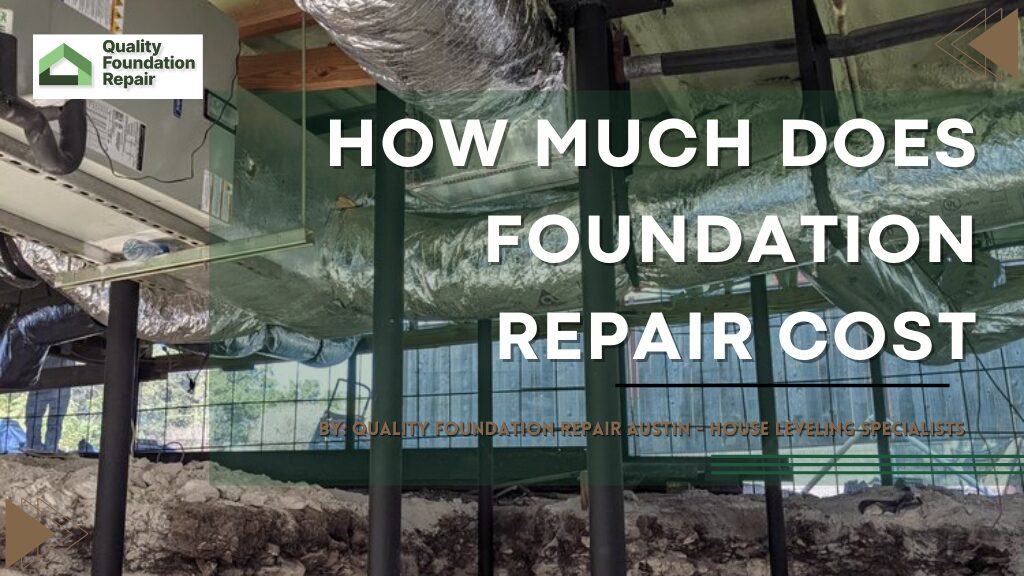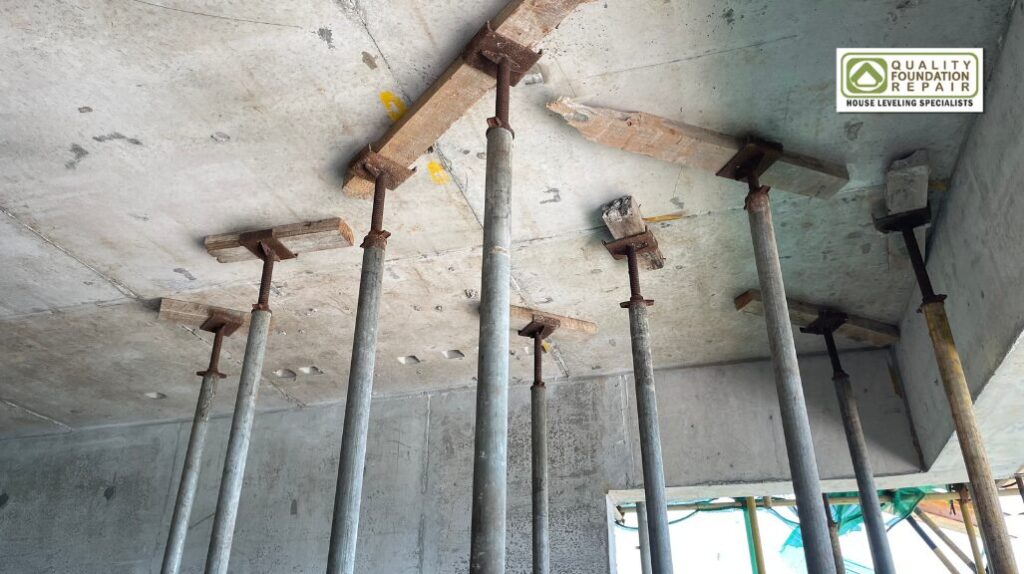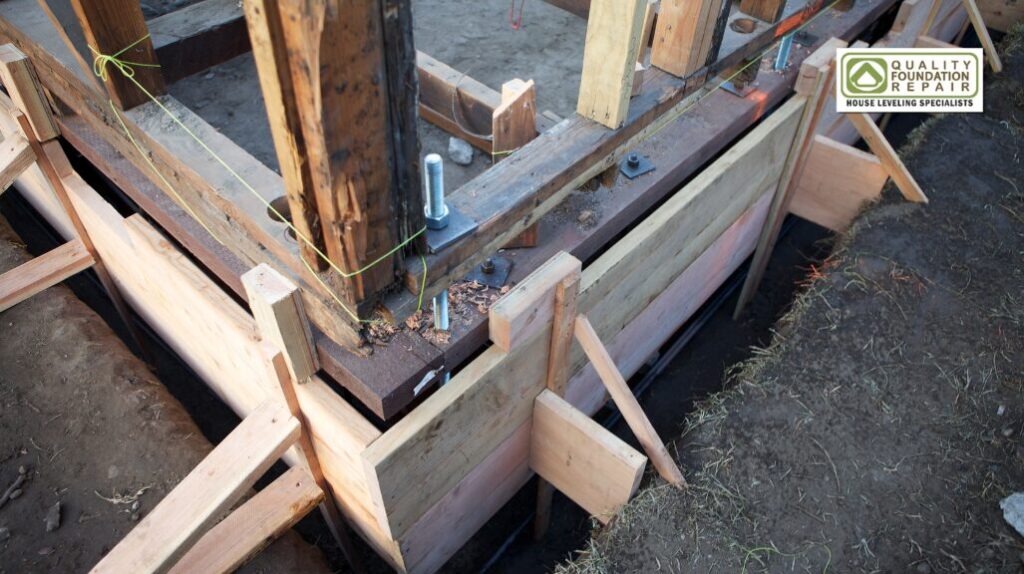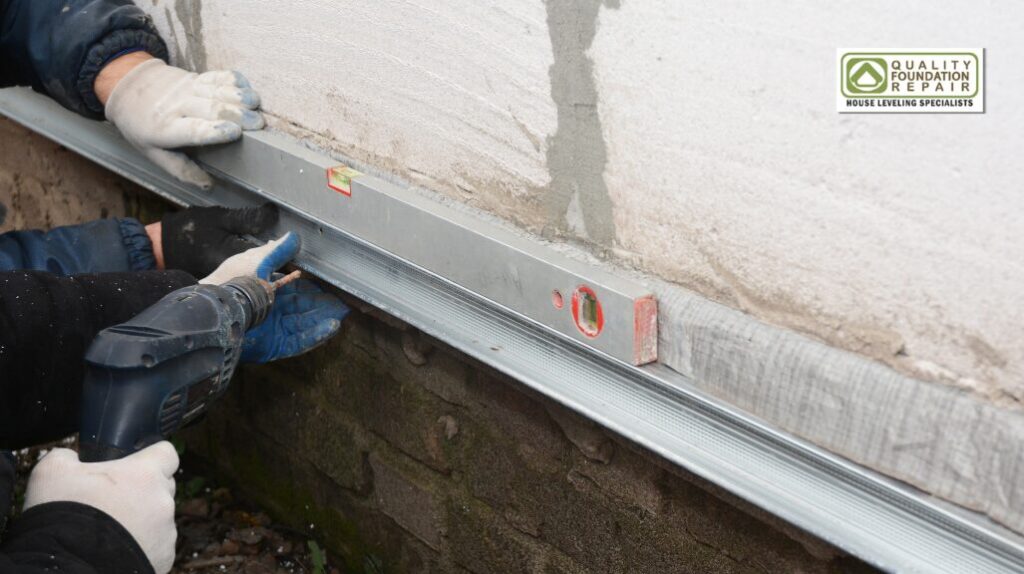
Tackling foundation repair is akin to ensuring the health of your home’s skeleton, which is critical for its stability and longevity. The financial aspect of foundation repair spans a broad spectrum, influenced by the damage’s nature and required repair methods. This exploration into foundation repair costs aims to equip homeowners with a comprehensive understanding of potential expenses. From minor crack sealing to extensive structural reinforcements, the article outlines factors affecting costs, average expenditures, various repair techniques, and strategies to mitigate these expenses. With this knowledge, homeowners can confidently navigate the complexities of foundation repair, ensuring their homes remain secure and valuable.
What is Foundation Repair

Foundation repair involves correcting structural issues within a building’s foundation. These issues can manifest as minor cracks or significant shifts, impacting the foundation’s stability. The primary objective of foundation repair is to reinforce its strength and stability, safeguarding the structure’s safety and prolonging its lifespan.
The methods employed in foundation repair can vary, including sealing, underpinning with piers, and injecting materials like foam or epoxy into the foundation. The selection of a repair method is determined by the specific nature of the foundation problems and the type of foundation in question.
Promptly addressing foundation issues is crucial. It helps prevent further damage, preserving the building’s value and structural integrity.
Why is foundation repair necessary
Foundation repair is essential for a multitude of reasons. It primarily prevents further structural damage, ensuring a building remains stable and safe. Ignoring minor issues can lead to significant problems, escalating repair costs and risks. Maintaining a solid foundation is crucial for preserving the property’s value. A well-maintained foundation is a cornerstone of a property’s appeal and market value. Lastly, foundation repair significantly contributes to improving home safety. Addressing foundation concerns helps avert potential accidents and injuries, making it an indispensable aspect of home maintenance. In essence, foundation repair is vital for safeguarding a property’s longevity, value, and the safety of its occupants.
Prevents further structural damage
Timely foundation repair halts the progression of minor issues into major structural concerns. This proactive measure not only preserves the building’s integrity but also significantly reduces the need for extensive, costly repairs in the future.
Maintains property value
A robust foundation is essential for retaining and increasing a property’s market value. Prospective buyers often prioritize structural soundness, making foundation repair a prudent investment for homeowners.
Improves home safety

Addressing foundation issues is crucial for ensuring a safe living environment. By correcting foundation problems, homeowners can prevent accidents and injuries caused by structural instabilities, such as uneven flooring or the potential collapse of walls.
Factors affecting foundation repair cost
Several key elements determine the cost of foundation repair. The type of foundation your home has is a primary factor, as different foundation types may require unique repair approaches. Equally significant is the severity of damage; issues can range from minor cracks to significant sinking or settling, each impacting the cost differently.
The property’s geographic location influences repair costs due to variations in regional cost of living and the availability of materials and labor. Moreover, accessibility challenges—how easily repair crews can access the affected area—can significantly affect the final price. Understanding these factors gives homeowners a clearer picture of potential foundation repair expenses.
Type of foundation
The type of foundation—whether it’s a slab, pier and beam, or basement—significantly influences repair costs. Different foundation types necessitate distinct repair methods and materials, affecting the overall expense.
Severity of damage
The severity of damage directly impacts the cost of repairs. More extensive damage typically requires more intricate and costlier solutions to ensure a durable fix.
Cracks

Cracks in the foundation can vary widely in terms of size and severity. Smaller cracks might need simple sealing procedures, while larger ones could signify more serious structural issues, leading to varied repair costs.
Sinking or settling
Homes experiencing sinking or settling may require underpinning or piering to stabilize the foundation. This process is among the more complex and expensive repair methods due to the significant labor and materials involved.
Geographic location
The geographic location of a property can cause foundation repair costs to fluctuate. Labor rates and the availability of materials can vary significantly across different regions, influencing the overall price.
Cost of living variations
Foundation repair costs tend to be higher in areas with a higher cost of living. This increase is attributed to these regions’ elevated labor rates and material costs.
Accessibility challenges
Accessibility challenges to the foundation area can raise repair costs. Limited access may necessitate extra labor or specialized equipment, adding to the total expense.
Average cost of foundation repair

The average foundation repair cost varies widely, depending on the complexity and extent of the required fixes. Homeowners may incur relatively low expenses for minor repairs, such as sealing small cracks. In contrast, addressing more severe issues through hydraulic piering can significantly increase the financial outlay. This cost range underscores the varied nature of foundation problems and the customized solutions they necessitate. By understanding the potential expenses, homeowners can better prepare for the investment needed to safeguard their home’s structural integrity and value.
Minor repairs
Minor repairs focus on fixing small, manageable issues that, if left unattended, could lead to more significant problems. These repairs often involve patching up minor cracks or adjusting doors and windows that have become misaligned due to slight foundation shifts. The cost for these repairs is lower, reflecting the minimal materials and labor required.
Sealing minor cracks
Sealing minor cracks is a crucial preventative measure in foundation maintenance. These cracks are filled with specialized sealants, effectively blocking water entry and preventing further deterioration. This straightforward and cost-effective procedure makes it a popular first step in foundation care.
Major repairs
Major repairs are necessary when a foundation suffers extensive damage, necessitating significant intervention. This category includes comprehensive solutions like underpinning, structural reinforcement, and correcting primary settling or shifting. Given the complexity and scale of these repairs, the costs are considerably higher, reflecting the intensive labor and materials needed.
Hydraulic piering
Hydraulic piering is a sophisticated technique employed in significant foundation repairs to address and rectify sinking foundations. It involves the strategic placement and driving of steel piers deep into the ground beneath the foundation to stabilize and lift the structure. Due to the technical complexity, specialized equipment, and materials required, hydraulic piering is among the more costly repair methods, but it offers a long-term solution for significant foundation issues.
Methods of Foundation Repair

Various methods are available for repairing foundations, each designed to tackle specific issues. Piering or underpinning techniques, such as the use of steel piers or helical piers, are often deployed to address problems of foundation settling or sinking by providing robust support from beneath. For correcting issues related to slabs that have sunk or shifted, slabjacking and polyurethane foam injection offer effective lifting and stabilization solutions. When sealing cracks and preventing moisture intrusion, epoxy injections and polyurethane foam sealant are efficient methods. These diverse repair techniques ensure that a wide range of foundation problems can be effectively resolved, restoring the structure’s stability and integrity.
Piering or underpinning
Piering or underpinning is a foundational reinforcement strategy that extends the foundation’s depth to achieve a more stable grounding. It’s particularly beneficial for structures experiencing settling or sinking, offering a long-term solution to uneven weight distribution.
Steel piers
Steel piers represent a robust solution, driven deep into the earth to underpin and stabilize the foundation. Their durability and the minimal disruption they cause to the surrounding landscape make them a preferred choice for many foundation repairs.
Helical piers
Helical piers are similar to steel piers but feature a screw-like design, allowing them to be twisted into the ground. This method is advantageous in challenging soil conditions where traditional piers might not be viable.
Slabjacking

Slabjacking is a corrective technique for lifting and leveling concrete slabs, including sidewalks and driveways, by pumping a specialized grout mixture underneath. This method effectively addresses issues of sinking or shifting at a relatively low disruption level.
Polyurethane foam injection
Polyurethane foam injection involves injecting a foam material beneath the foundation to lift and stabilize it swiftly. The process is quick, efficient, and causes minimal disturbance, making it an attractive option for immediate foundation repairs.
Sealing
Sealing is crucial in foundation maintenance. It prevents water from penetrating cracks and causing further damage. This preventive measure can employ various sealants tailored to the specific needs of the crack or gap.
Epoxy injections
Epoxy injections repair concrete foundation cracks, offering a strong, waterproof seal. This method stabilizes the existing crack and prevents future damage by ensuring the crack is thoroughly sealed.
Polyurethane foam sealant
Polyurethane foam sealant is designed to seal larger cracks and openings, expanding upon application to fill the void and create a durable, waterproof barrier. This flexible solution adapts to the size of the crack, ensuring a secure seal.
How to reduce foundation repair costs

Proactive measures and routine maintenance can minimize the costs associated with foundation repair. Regularly cleaning gutters is crucial, as it prevents water from pooling around the foundation, which can lead to significant issues. Proper landscaping is also key; it helps maintain consistent soil moisture levels around the foundation, reducing the risk of settling and cracking.
Early detection of issues plays a vital role in cost reduction. Addressing small problems can prevent them from escalating into more severe, costly repairs. Additionally, routine foundation inspections can help homeowners spot potential problems early on. By implementing these strategies, homeowners can effectively lower the expenses of maintaining their home’s foundation, ensuring its stability and durability without breaking the bank.
Regular maintenance
Regular maintenance is the first line of defense against foundation damage. This broad category includes various activities designed to keep the foundation in optimal condition, thereby preventing the need for extensive repairs.
Gutter cleaning
Gutter cleaning is crucial for water management around the foundation. When gutters are free from debris, they effectively channel water away from the home’s base, significantly reducing the risk of water-induced foundation problems.
Proper landscaping
Proper landscaping involves strategic planning to ensure water flows away from the foundation, not towards it. Homeowners can mitigate the risk of settling and cracking by maintaining balanced soil moisture levels around the foundation.
Early detection of issues

The early detection of issues can lead to significant savings on repair costs. Spotting and addressing minor problems before they escalate allows for simpler, less expensive solutions.
Routine inspections
Conducting routine inspections is key to identifying potential foundation issues early on. Regularly examining the foundation can reveal early signs of damage, enabling timely interventions that prevent more severe complications.
Choosing a Foundation Repair contractor
Selecting the right foundation repair contractor is pivotal for achieving durable and effective foundation repairs. The contractor’s experience and reputation, which can be assessed through online reviews and feedback from previous customers, are essential. A contractor’s years in business often reflect their expertise and reliability in the field.
Furthermore, the warranty offered by the contractor is a critical factor. Understanding the warranty length and what’s covered is essential, as this indicates the contractor’s confidence in their work quality. By meticulously evaluating these elements, homeowners can make an informed choice, ensuring they select a contractor who aligns with their specific foundation repair requirements.
Experience and reputation
The experience and reputation of a foundation repair contractor are paramount. Contractors with a proven track record and positive endorsements from previous clients are likelier to deliver high-quality and dependable foundation repair services.
Online reviews
Online reviews act as a window into the contractor’s reliability and the satisfaction of their past customers. These reviews can provide critical insights, aiding homeowners in making well-informed contractor selections.
Years in business

A contractor’s years in business often reflect their depth of expertise and stability within the industry. Firms with a long history typically suggest a consistent track record of fulfilling customer expectations and adapting to evolving repair techniques.
Warranty offered
The warranty offered by a contractor is a direct indicator of their confidence in the work performed. It’s a crucial factor for homeowners, as it offers a layer of protection and assurance regarding the quality of the repair.
Length of warranty
The warranty length can differ among contractors, but extended periods generally signify a greater commitment to service and customer peace of mind after the repair.
What’s covered
Clarifying what’s covered under the warranty is essential for homeowners. It ensures a clear understanding of the protections in place, encompassing specific repairs and conditions under which the warranty applies.
Financing foundation repair

Financing foundation repair is a critical consideration for homeowners needing significant structural fixes. Home insurance might provide coverage for repairs, depending on the specifics of your policy, making it crucial to understand policy coverage specifics thoroughly. Beyond insurance, several financing options exist to help manage the costs. Home equity and personal loans are popular choices, offering the necessary funds to ensure the foundation’s integrity and safety without the burden of immediate full payment. By exploring these options, homeowners can identify a financial plan that best suits their needs, ensuring their home remains secure and well-maintained.
Home Insurance
Home insurance can be a lifeline for covering foundation repair costs, though coverage is contingent on specific policy terms. Homeowners are encouraged to closely examine their policies to ascertain the scope of coverage for foundation-related damages.
Policy coverage specifics
Delving into the policy coverage specifics is essential. Understanding which foundation damage scenarios are covered and the conditions that apply enables homeowners to navigate insurance claims more effectively.
Financing options

Various financing options are accessible to homeowners needing to manage the expenses of foundation repairs. These financial solutions offer a way to distribute the repair costs over time, easing the immediate financial impact.
Home equity loans
Home equity loans offer a method to finance substantial foundation repairs by borrowing against the home’s equity. This option can be appealing due to potentially lower interest rates and the ability to secure a significant loan based on the home’s equity.
Personal loans
Personal loans represent an alternative financing route. They offer secured or unsecured loans with interest rates that vary based on the borrower’s creditworthiness. While they provide considerable flexibility, the interest rates for personal loans may be higher than those associated with home equity loans, making it essential to compare options.
Frequently Asked Questions
What is the average cost of foundation repair?
The average foundation repair cost can vary widely, typically from $2,000 to $7,000. Factors such as the extent of damage and repair methods influence the final price.
How do professionals determine the cost of foundation repair?
Professionals assess the extent of damage, the soil condition around the foundation, and the repair method needed. This evaluation helps determine the overall cost of the foundation repair.
Can the type of foundation affect repair costs?
Yes, the type of foundation significantly affects repair costs. Slab foundations often require less expensive repairs, while pier and beam foundations may incur higher costs due to their complexity.
Are there any hidden costs in foundation repair?
Hidden costs in foundation repair can include landscaping repairs, plumbing tests, and permits. Homeowners should inquire about potential additional costs when receiving a repair estimate.
How can homeowners save money on foundation repair?
Homeowners can save money on foundation repair by addressing issues early, comparing quotes from multiple contractors, and ensuring the job is done right the first time to avoid future expenses.



